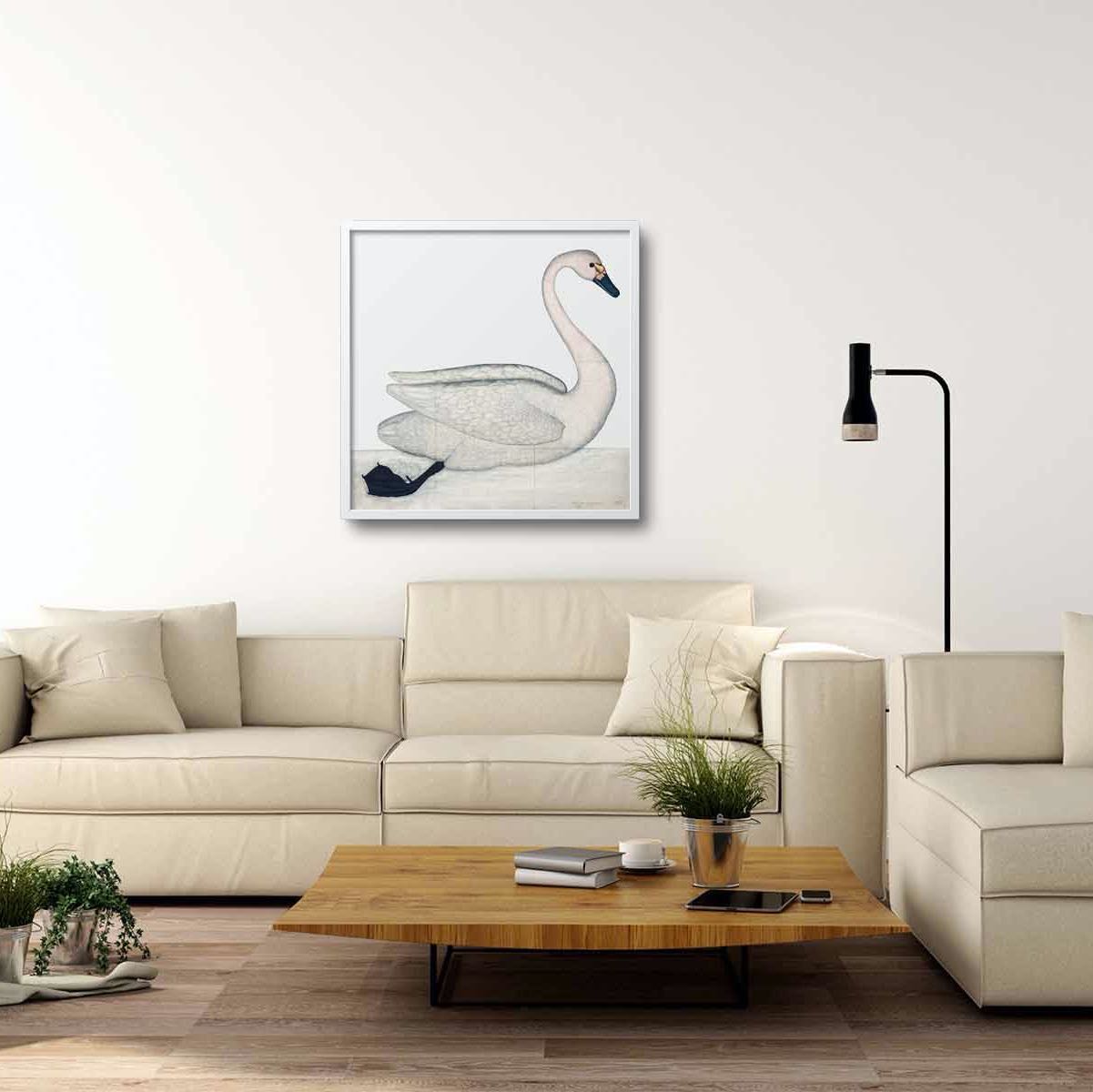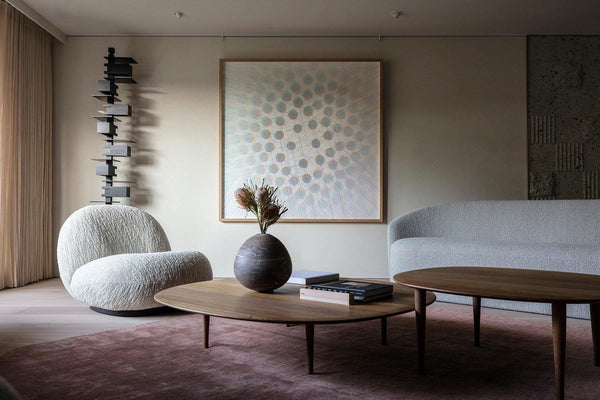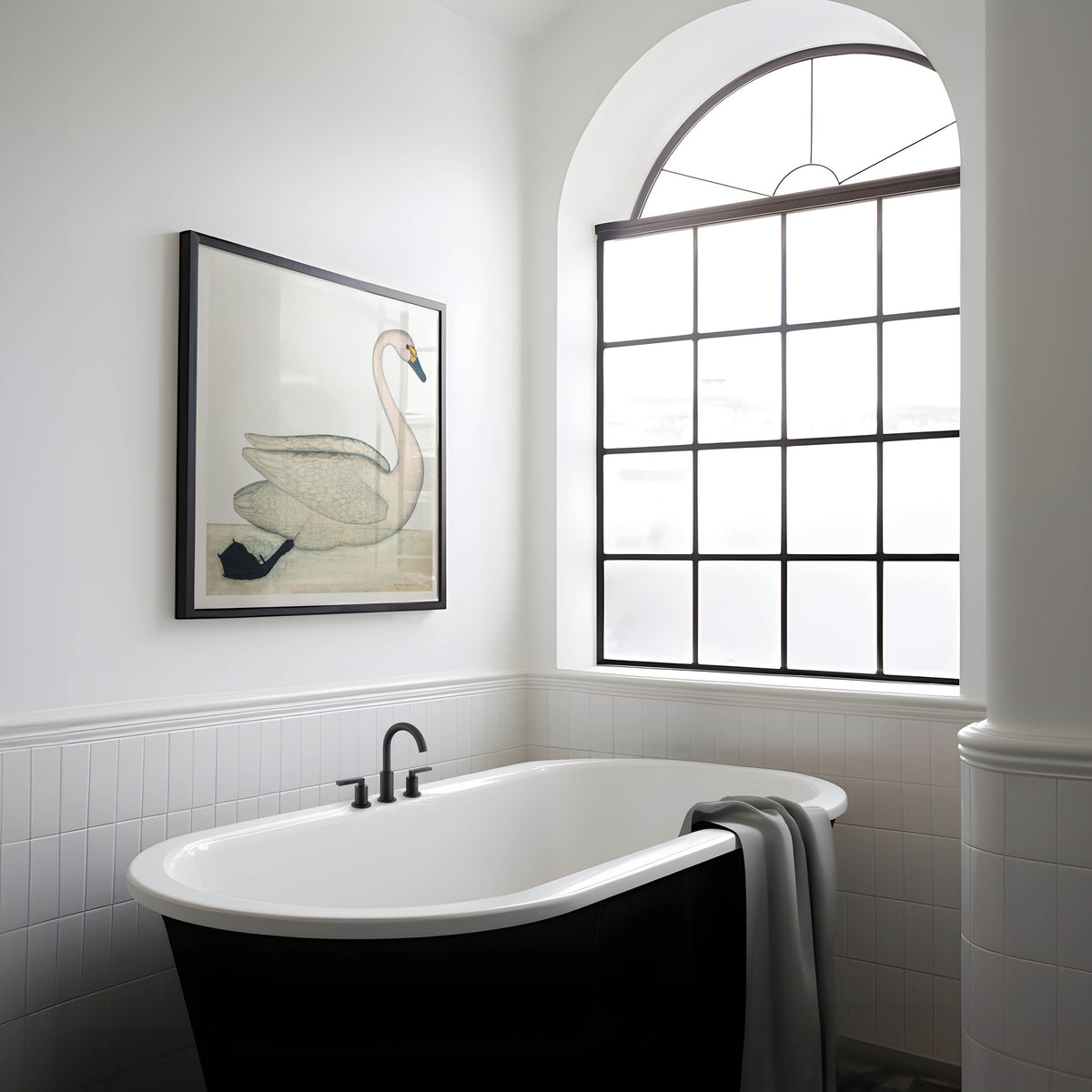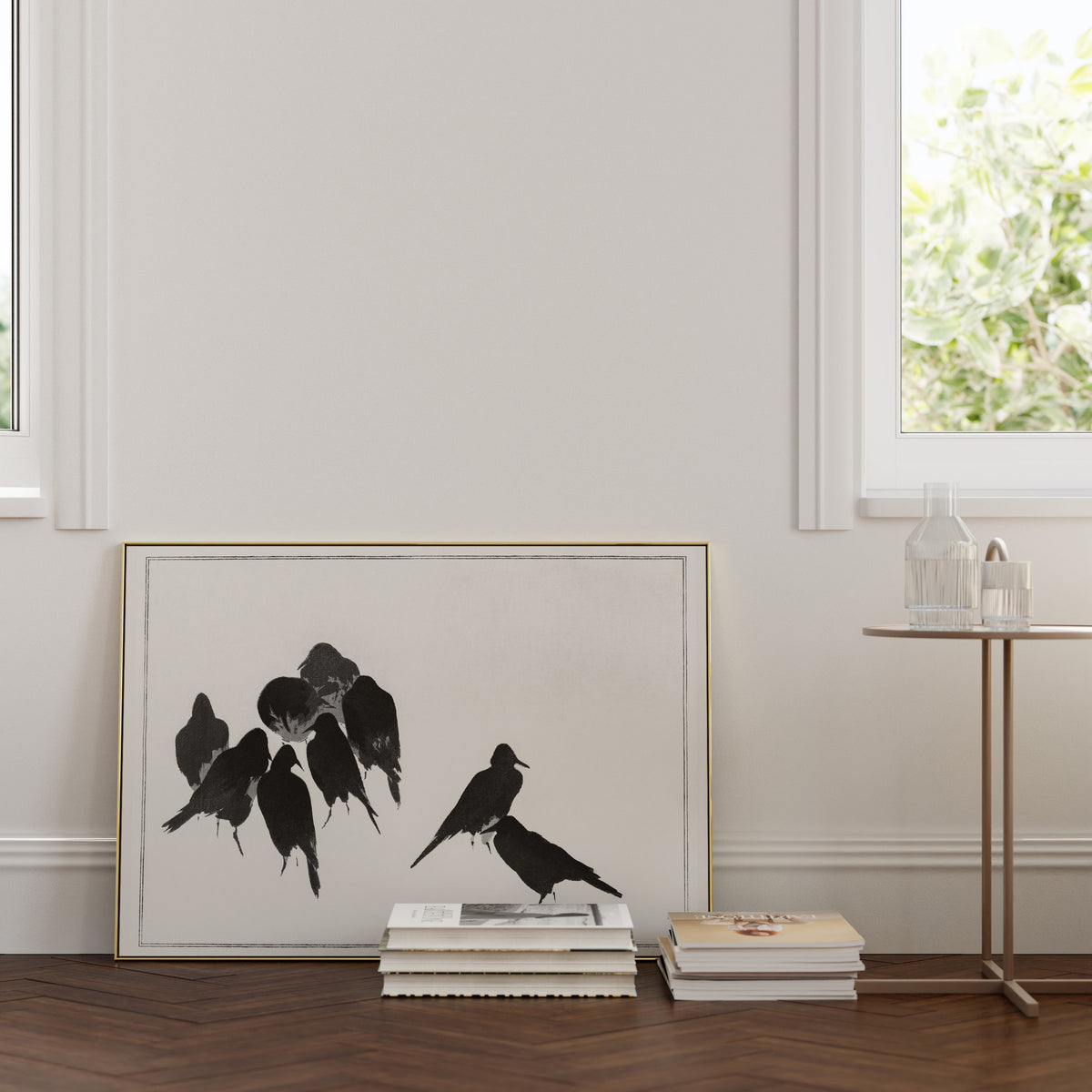What is Japandi Decor? – Ideas to Help Design Your Interior Space Japandi Style

Trends come and go, but the recent Japandi trend, merging Scandinavian and Japanese aesthetics, has an aura of longevity about it. Maybe because, in various forms, it’s already stood the test of time.
While Japandi appeared to burst out the gates a few years ago, in reality its evolution has been much more gradual. Scandinavian designers and their Japanese counterparts have quietly drawn inspiration from one another for decades — centuries, in some cases.

The interior of a Tokyo apartment designed by Copenhagen’s OEO Studio, Photography by Michinori Aoki
A History of Mutual Admiration
With similar philosophies and mutual admiration, Japanese and Nordic designers seemed destined to come together. Both traditions value minimalism, functionality, natural materials, and a connectedness to nature. Craftsmanship figures prominently, with fewer, finely crafted pieces preferred over a cluttered space. Both aesthetics feature pared-back designs and muted color palettes.

Source: Oslo Design Fair
Well before Japandi made an entrance, Nordic and Japanese styles had a huge impact on the design world individually. The Japanese aesthetic has influenced Western architecture and interior design since Westerners first glimpsed its distinctive style in the mid-nineteenth century. Architect Frank Lloyd Wright, leader of the Arts & Crafts movement William Morris, and Belgian interior designer Axel Vervoordt have all taken inspiration from Japanese design.

Source: Axel Vervoordt’s Wabi room with ancient Japanese pottery and abstract calligraphy by Yuichi Inoue.
Scandinavia also left an indelible mark on the world of design. Nordic influence accelerated in 1950s with Design in Scandinavia, a joint exhibition of the Nordic applied arts that toured 24 cities and towns in the United States and Canada between 1954 and 1957. The exhibition featured more than 700 objects for the home by Scandinavian designers. The Various works showcased the functionality, minimalism, and craftsmanship embedded in Scandinavian design, and demonstrated that good design can be accessible and affordable. The message resonated, as North Americans enthusiastically picked up the banner and charged into new design territory.
With Japandi, the merger of these two design powerhouses is nothing short of spectacular, in an understated way, of course. And with legions of adherents joining the movement, Japandi is bound to evolve in new and unique ways over time. In fact, evolution is built into Japandi’s DNA — with scores of design elements from two traditions, the number of design combinations is staggering.
Japandi’s Endless Versatility
That Japandi appears fresh and new, even while borrowing heavily from two venerable traditions, is a tribute to its endless versatility within a broader design framework. The key to successfully combining elements lies in first understanding the similarities and differences, and then curating a look that’s unique and timeless.
Inevitably, you will naturally lean more towards one design aesthetic than the other. Skew Japanese, and you’ll likely end up with a spare interior, grounded in earthy colors and carefully chosen furniture, as finely crafted as budgets allow. The living room below is a good example of a lean towards Japan, with is earthy sofa, small proportions, and functional furniture.

Photography by Jonas Bjerre-Paulson, Source: Norm Architects
On the other hand, skew Scandinavian and your interior will likely be bright and airy, with clean lines and lighter coloured furniture. Combining that traditional Scandinavian look with uniquely Japanese accessories will help give it a Japandi flair. For example, the room below is unmistakably Scandinavian with a subtle nod to Japan in the form of a pendant light.

Photography by Spacejoy on Unsplash
While it seems easy enough to pick and choose among design elements for the ultimate Japandi melange, getting it right isn’t always a simple task; it requires attention to detail and a willingness to refine. Before digging into the elements, it might be useful to have a look at how the professionals accomplish the task of combining the two styles into a coherent whole.
How Seasoned Designers Combine Scandinavian and Japanese Elements
Although Japanese and Nordic designers have drawn inspiration from each other for decades, direct collaborations are a more recent phenomenon. For example, the Hirata Gen Collection shown below is a collaboration between Japanese furniture maker Hirata, Danish architect Lars Vejen, and Japanese designer Taijiro Ishiko.

Source: Hirata Gen Collection
In this living room, it’s difficult to tell where one design aesthetic starts and the other ends. Clean lines and flexibility are on clear display. The upholstered stools with solid wood handles are easily moved and double as tables when needed. The design is natural and understated, with no element demanding attention, and it’s neither overtly Nordic nor fundamentally Japanese, although both influences are clearly visible. In short, it’s a unique blend. It’s Japandi.
The Motarasu collection is another example of furniture that effortlessly combines a Japanese aesthetic with a Nordic one. Founded in Denmark in 2019 by Mikkel Zebitz, the company specializes in gathering Danish and Japanese designers under one brand in order to share common traditions and styles. The daybed shown below has echoes of both traditions, and serves as a multifunctional addition to almost any room.

Source: Motarasu
While these high-end collections may be out of reach for many of us, achieving a curated Japandi style is well within the grasp of just about anyone. The more you know about Japandi’s basic elements, the more creative you can be when it comes to combining elements and staying within budget.
Key Elements of Japandi Design
If the similarities and differences between the two styles have you salivating at the sheer number of possibilities, you’re not alone. With a host of design elements to choose from, it’s no wonder Japandi’s arrival has generated so much excitement. Here’s what you need to know to kickstart your creative process and realize your dream of a clean, modern Japandi interior.
Minimalism
Minimalism is often easier said than done Nordic and Japanese design traditions both value stripping away unnecessary decoration, but it can be tricky to get right. Life, after all, is messy.
Enter furniture with storage. Clutter is a killer when it comes to achieving a scaled-back Japandi aesthetic. Clever storage sets the stage for success and is an obvious first step in planning the design. And there’s lots to choose from when it comes to clever storage in all price ranges.
The built-in wooden storage below keeps the interior clean and interesting, blending well with the old wooden beams above, the brutalist concrete walls, and the soft curves of the Japandi stye chairs and simple table.

Source: Karimoku Case Study
Without the storage on the left, the room would seem stark, as well as susceptible to clutter creep. The expertly constructed wooden shelves soften the concrete and add warmth. The result is a quiet space, ready for relaxing.
For a budget conscious alternative, consider Ikea’s Besta system — equally effective when it comes to putting clutter behind closed doors, and at a very reasonable price point.

The Besta system offers a number of sleek door styles that fit well with a Japandi aesthetic. And if you don’t find what you’re looking for, there are a number of third-party companies that specialize in customized solution using Ikea’s base cabinets.
Below, green doors from Norse Interiors give Besta a boost in this moody interior.

Source: Norse Interiors
The overall look is dark, spare, and calming, while the wall-mounted Besta system helps create a feeling of spaciousness.
Not everything must be behind closed doors, though, and there are plenty of opportunities for displaying prized possessions within the Japandi framework. Open shelving is a beautiful option, but it does require a degree of decorating restraint, not to mention an equal degree of enthusiasm for dusting and clearing away life’s detritus.
Open shelving is faithful to both Nordic and Japanese traditions. The Royal System shelving unit below is the work of Danish designer Poul Cadovius. First built in 1948, it was recently re-introduced by dk3.

Source: dk3
Careful attention to detail (it has dovetailed joints), and versatility (Cadovius claimed over 16 million combination possibilities) earned the system the Gold Medal at the Finland Furniture Fair in 1950 and the Silver Medal at the Milan Triennale. The system keeps the floorspace free while providing ample opportunities for display. Combinations include cabinets that allow for a hybrid solution of open and closed shelving. Something for everyone, it seems.
Examples of Japanese open shelving are plentiful as well. This open shelving system designed for Karimoku Case Study draws inspiration from the shoe and umbrella stands at the entrance to Japanese temples.

Sources: Karimoku Case Study
With removable shelves and hidden bookends, it’s easily customized to fit different spaces and preferences.
Minimalist is more that just storage, though. It rests on creating open space, stripping away unnecessary decoration and furniture, and creating an airy look with minimal window coverings.
What if you adore Japandi but you’re not a minimalist at heart? There’s still a Japandi style for you. Both Nordic and Japanese design traditions have flourishes that may appeal to you. Think layered Japanese interiors or brightly coloured Scandinavian textiles. The Finnish design house, Marimekko, is famous for its bold textiles, like the iconic Unikko (poppy) pattern from 1964 on a Japanese-inspired teapot.

Source: Marimekko
You might wonder how a Finish design ended up on a Japanese-style teapot; again, collaboration. Since the 1960s, Marimekko has worked with a number of Japanese designers, such as Katsuji Wakisaka and Fujiwo Ishimoto, who have created hundreds of patterns blending the Japanese and Nordic traditions of simplicity and references to nature.
So if muted and earthy isn’t your thing, rest assured, bold and bright works, too.
Functional Furniture
Apart from minimalism, it would be hard to find a point of greater convergence than functionality. In fact, functional furniture and minimalism are inextricably linked in both traditions. Multifunctional furniture allows for fewer pieces, limits wasted space, and helps create an open, spare interior. Ergo, minimalism.
The need for functionality has practical roots. For Scandinavians, survival in a harsh climate meant everything demanded a function, and “need” trumped beauty. While that ethos has given way to a desire for more beauty, the functionality remained. Necessity was the mother of invention in Japan as well. Compact interiors required innovative storage solutions and functional furniture to create a clutter-free space.
Functionality is at the heart of Japandi’s current appeal. Functional furniture makes interiors seem more open and adapts to the demands of frequent moves, where furniture is called upon to serve new roles in different spaces. After all, no one wants to purchase new furnishings with every move.
The Carl Hansen and Son table originally designed in 1958 by Børge Mogensen, is a case in point. It could easily serve as a bench, a bedside table, or as a small coffee table, depending on need and available space.

Source Carl Hansen and Son
With solid oak construction, a double-woven wicker seat, and expert joinery, it’s built to last through many iterations and moves. And in this case, need and beauty are on equal footing.
Functional furniture need not be expensive, though. Whatever your style and budget, there’s a piece of functional furniture to help you achieve the Japandi interior that’s right for you, and you can always level up later.
Fine Craftsmanship
The catch phrase, buy less, buy better is not limited to recent consumer trends; it also defines Japandi. Both the Scandinavian countries and Japan have sought to preserve the crafts that define their furnishings and hardwire longevity. In a post-World War II environment of mass production, Scandinavian countries established institutions and schools to preserve traditional crafts. In addition, they sought to integrate craftsmanship into commercial production.
With simple designs and quality craftsmanship, furniture stands the test of time. The chair and sofa below were designed by Erik Ole Jørgensens in the 1970s and updated by FDB Møbler with new leather cushions. Five decades later, they’re still timeless and modern.

Source: FDB Møbler
Japan’s furniture design and production is well known for craftsmanship, as well as a host of traditions unique in the world. Japanese joinery (Edo Sashimono), for example, is a skill honed over centuries, and involves the use of complex joints instead of nails. The resulting wooden structures, including furniture and houses, often stand unscathed for hundreds of years.

Source: Complex joinery
Of course, fine craftsmanship comes at a cost, and that’s where “buy less” comes in. It’s entirely possible to build a Japandi design around one good piece, and gradually add others over time. The coffee table in the photo below is a good example of an expertly crafted piece and a designated star in any setting.

Source: Norm Architects
Not only is the design timeless, but the quality ensures that it will remain a star for many years — or decades — to come. The key to making Japandi work on a budget is to create focal points that hold the design together — look for traditional craftsmanship, solid timber, clean lines, and naturally oiled surfaces in order to get that wow factor.
Artworks & Design Elements
While there is nothing formulaic or rigid when it comes to choosing artworks, Japandi’s refined aesthetic and emphasis on nature means some choices are better than others. Here are some options worth considering, some muted, and some bright and bold.
Abstract Calligraphy
Abstract calligraphy straddles the line between calligraphy and modern abstract art, and comes with a storied history. The photo below shows paintings by avant-garde calligrapher Yuichi Inoue, whose work adorns the walls of famed designers like Axel Vervoordt and hangs in public art institutions around the world.

2016, YU-ICHI INOUE - A Retrospective 1955 – 1985, 21st Century Museum of Contemporary Art, Kanazawa, Japan
Inoue’s abstract calligraphy influenced a number of abstract expressionist, including Franz Kline and Robert Motherwell. The Motherwell exhibition poster below shows that influence, and adds a touch of warmth with golden brown edging and a soft beige background.

Motherwell Exhibition Poster
Renowned Japanese artist Saburō Hasegawa led the way for abstract calligraphy in the 1950s. He advocated for abstract art in Japan and for a connection between Western abstract art and Asian art. His abstract calligraphy below fits with a wide variety of styles, and is right at home in Japandi spaces.
Hasegawa Abstract Calligraphy
Simple Nature
The value of bringing nature indoors in Japanese and Scandinavian cultures cannot be overstated. As an antidote to long winters, the open airiness of a Nordic interior is designed to let in as much light as possible and provide a sense of being in nature. In Japan, the idea of shakkei, or borrowed scenery, is a venerable tradition that promotes well being and expands the visual limits of rooms that are often quite small.
As appealing as that sounds, many of us spend our days in urban settings, unable to invite nature in through expansive windows or glassed-in rooms. Happily, house plants and art provide reasonable facsimiles. The bonsai tree below, is the perfect antidote to built environments, adding a splash of green and standing in for its larger outdoor counterparts.

Photography: Davide Cantelli on Unsplash
Works of art that depict nature in its simplest form enhance the Japandi aesthetic, as well. The Ike Taiga trees shown below are simple representations, yet provide structural interest and a sense of nature against a clean, white background.

Ike Taiga Trees
Similarly, greenery, like the fern print below, fits well in the bright, open interior below, and echoes the outdoor hedge.

Fern Print
Wildlife, like Olof Rudbeck’s Swedish bird prints, are a classic way to add simple, refined nature to walls. Rudbeck’s birds have been the darlings of top designers for decades, fitting in with a variety of styles. And there’s a bird for just about every taste, from the graceful swan show below to some decidedly quirky characters.

Olof Rudbeck Swan
Abstract Nature
Nature doesn’t have to be strictly figurative; abstract nature works in Japandi settings, too. Charles Demuth, a leading artist during the American Modernism era, applied cubist techniques to architectural landscapes using delicate color washes. His Bermuda series delicately blends rounded, organic shapes into a cubist framework. The result is a standout in any environment.

Charles Demuth Bermuda Tree
Early American modernist and abstract painter, Arthur Dove, produced unconventional abstract landscapes using a variety of media. The three painting below, ranging from a black and white representation of goats to boldly colored abstracts, make great additions to Japandi walls.

Arthur Dove, Goats
Arthur Dove, Barnyard Fantasy

Arthur Dove, Pond in Sunlight
Works by Paul Nash are also a great choice. As an important English landscape artist, he developed an abstract style in his later career that gave his paintings a surreal quality. The soft hues combine with splashes of black in the painting below, adding interest without dominating the monochromatic room.

Paul Nash, Cliffs
For a bolder splash of color, Reijer Stolk’s abstract flowers command attention in a spare Japandi-style room.

Reijer Stolk, Flowers
There are so many different styles of art that work with the Japandi aesthetic that it’s hard to narrow it down to just a few. What’s important is how they complement and add personality to your interior. So bring in nature, add a pop of color, or create a focal point without worrying about a Japandi Ideal; the choice is yours.
Crafts, Ceramics, and Vases
A handcrafted bowl bowl or vase can instantly elevate your Japandi decor, and provide function as well as beauty. Ceramics with a Japandi twist are widely available, both the commercial and the artisan variety
And when it comes to Japandi and ceramics, it’s hard not to think of centuries of handmade Japanese pots, vases, and bowls, with their simple shapes and beautiful surfaces. In true wabi-sabi tradition, the beauty of transience and imperfection is celebrated. The tea bowl below, from the Edo period, is beautifully imperfect with its wobbly shape and varied surface.

Tea bowl, Edo period katamigawari, Photo: Wikimedia Commons
When putting together accessories choose durable materials—cast iron, marble, and other types of natural stone, and no need to overlook what you already have. A beautifully shaped vase or ceramic bowl will likely fit right in.
Colors From Nature
While colors are typically muted and drawn from nature, the japandi color palette is by no means limited. Colors run the gamut from white and beige slash greige, to deep plums, greens, and other rich tones found in nature. If there is a point of divergence between those who lean towards the Nordic aesthetic and and those who lean towards the Japanese side, this could well be it. Scandi aficionados may prefer white or lighter colors, while darker colors may be preferred by those who love Japanese design. The room below is clearly on the lighter side of Japandi.

Japandi inspired apartment in London, designed by Tom Lawrence-Levy, Natural Asthetik, Photography: Vigo Jansons
The dark green walls in the image below do not detract from the overall minimalism of the space. In fact, they seem to disappear, letting the architectural chair and unusual lighting options stand out.

Photography by Jason Wang
Contrasting colors hold a special place in Japanese interiors and create interest in modern Japandi spaces. To achieve the look, combine neutral tones with deep blue, black, brown, plum, and olive green accents. The black top on the table below looks elegant with the neutral walls and light wooden chairs. There’s no need for more contrast, and the overhead light echoes the neutral tones on the walls and window frame.

Source: Scandinavian Designs
For bolder contrast, an accent color in a neutral room creates interest and warmth.

Photography by SpaceJoy
Whether you choose to go with a light and airy feel, or emphasize more earthy tones, it’s helpful to make the decision early on. That doesn’t mean you should rush out and buy paint, though. Saving the paint purchase for later allows flexibility to choose key pieces from what you already own, or buy new ones. Matching the paint color to a rug or vase is much easier once you know what accessories and fabrics you want to pull together.
Choosing the right paint colors also depends on natural lighting. If your space is naturally dark, you’re never going to achieve that light, breezy feel, so it’s best not to fight it. Lean into the dark side, and lightened the overall effect with furniture, art, and fabrics.
Lighting
Japandi inherits an array of options from both Nordic and Japanese traditions, with interesting hybrid models from the long marriage between the two.

Paul Henningsen Artichoke Lamp
Many Danish midcentury modern lamps drew inspiration from Japan. Perhaps the most famous are those designed by Arne Jacobsen, Hans J. Wegner, Alvar Aalto and Poul Henningsen. The PH 5 pendant below, designed by Poul Henningsen, has become a design icon particularly in Denmark, where it is found in a large number of homes. 
Source: Louis Paulson
And the tradition continues. The Sebastian Conran Gifu Collection, shown below, fuses Western and Japanese aesthetics to form a clearly modern take on lighting. The collection is the result of a three year collaboration with British designer Conran and 16 traditional makers based in Gifu, Japan, benefitting from the enormous range of talent, techniques, and skill in the Gifu region.

Source: Sebastian Conran Gifu Collection
Of all the elements, lighting is perhaps the easier way to give a Japandi twist to your existing furnishings. Nondescript couches and tables get a decided Japandi upgrade with the simple addition of a dramatic Japanese light fixture, a mid-century Danish modern lamp or fixture, or one that fuses the two design influences. 
Photography by Spacejoy on Unsplash
When it Comes to Japandi, Go Ahead, Style it Your Way
Scrolling through images, it’s apparent that there is not one overarching style that defines Japandi. Instead, elements can be combined to yield as many renditions as there are designers. With an exciting array of elements to choose from, Japandi can’t help but inspire with its simple, refined, and humble style, and it’s ability to adapt to our modern way of living. So take the plunge and create something original.
1 Response
Leave a comment
Comments will be approved before showing up.
Also in News

From Beak to Chic: Bird Prints to Enhance Your Bathroom Decor

Attracting Birds with Bioswales: An Eco-Friendly Approach to Water and Wildlife
Bioswales are not just an effective means to manage rainwater runoff; they also transform your garden into a sanctuary for local wildlife. In our latest post, we delve into the beauty and utility of bioswales with tips on how to attract birds to your garden. Whether you're a seasoned birdwatcher or a green-thumbed gardener, learn how the humble bioswale can become a bustling hub for feathered friends - and how you, too, can contribute to the health of our planet.





houselight
September 27, 2023
I appreciate the depth of research that went into your article. The comprehensive information you provided demonstrates a commitment to delivering accurate and reliable content.
READ MORE